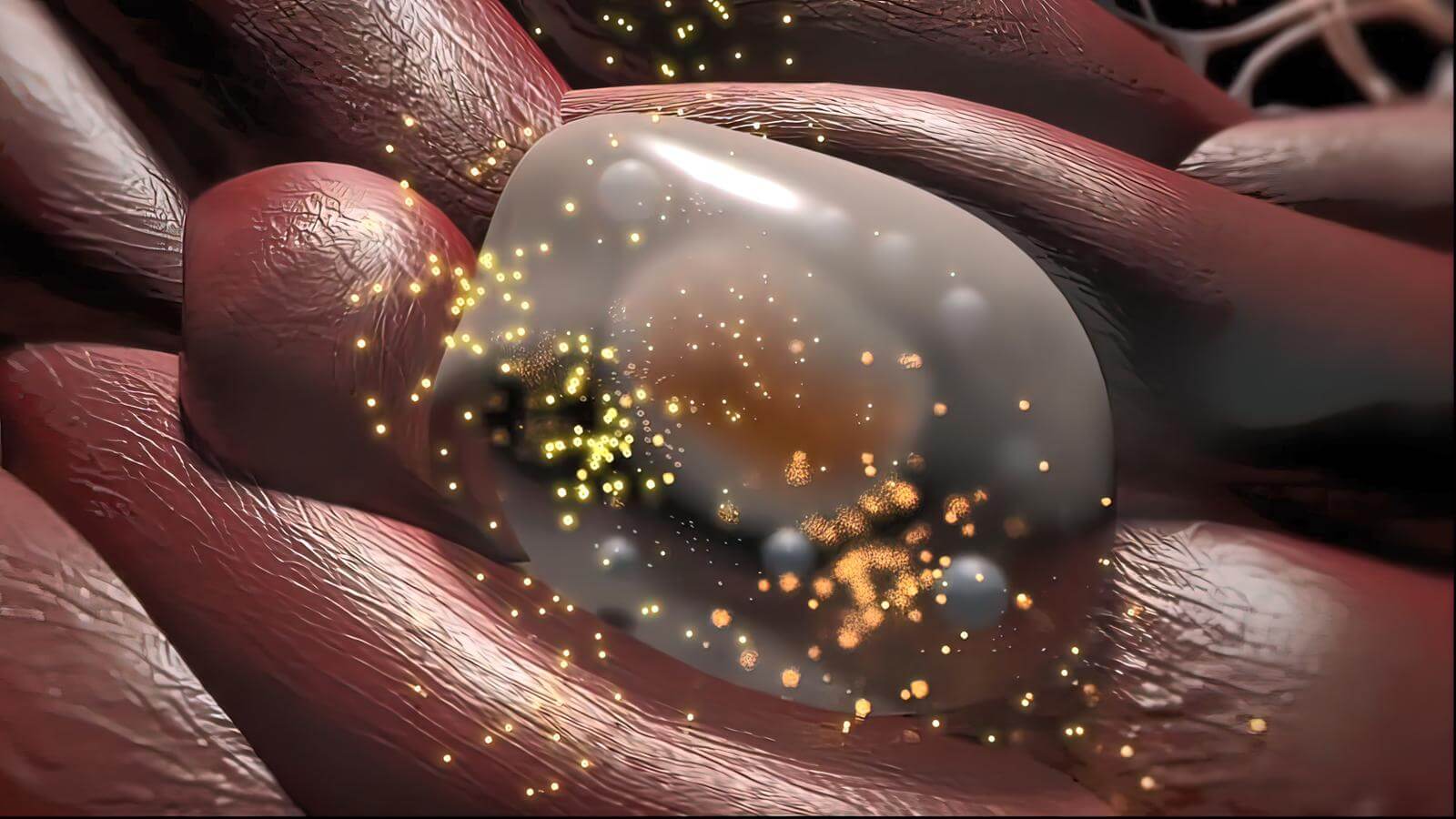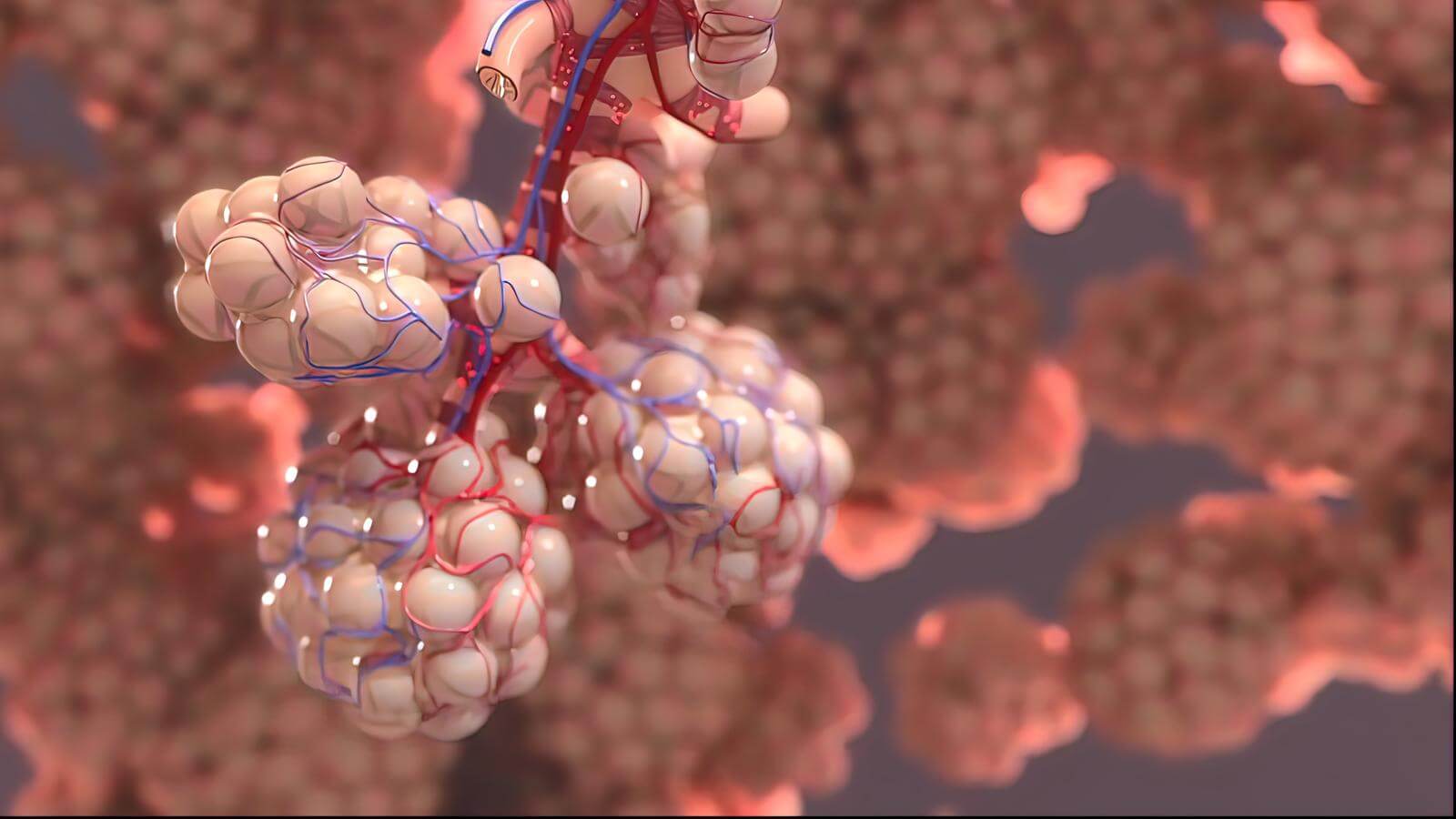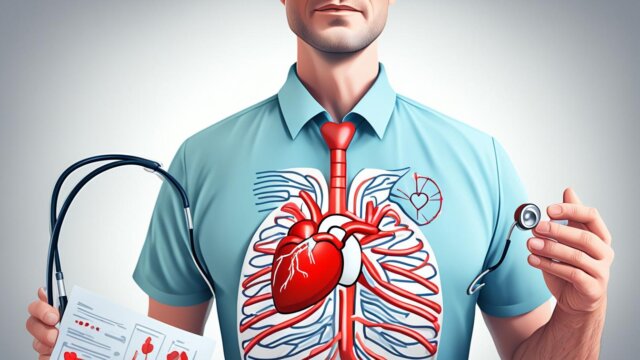FTC disclaimer: This post may contains affiliate links and we will be compensated if you click on a link and make a purchase.
Inflammation is a natural response to injury or infection. It’s part of our immune system and helps protect us from disease. But inflammation can also cause damage to healthy tissue.
We should all be aware of inflammation because it plays a role in many diseases, such as heart disease, cancer, diabetes, arthritis, Alzheimer’s, and even depression. Chronic inflammation may be responsible for most health problems.
This article will help you understand how inflammation works, its types, causes, diagnosis, treatment, and prevention.
What is Inflammation?

Inflammation is an immune system response to protect the body from infection. Inflammation occurs when white blood cells migrate out of blood vessels into the infected area, where they act as phagocytes.
(destroyers of foreign matter). The white cells can also wall off the infected area, preventing its spread to other body parts. A secondary aspect of inflammation involves the movement of protein-containing fluids to the affected area.
The dilation of upstream and constriction of downstream blood vessels to the infected area results in a loss of blood plasma at the site, which leads to swelling. Pain results from the compression of nerve endings that the swelling causes.
Inflammation progresses through four stages:
- Redness
- Heat
- Swelling
- Pain
Inflammation can also bring on general flu-like symptoms such as fever, chills, fatigue, loss of energy, and headaches.
In some cases, the inflammation response can be triggered even when no foreign invader exists. Such is the case with autoimmune diseases such as rheumatoid arthritis and shoulder tendonitis. In these cases, the body’s protective system causes damage to itself.
Inflammation as a response to injury is non-specific in that it occurs in an identical manner regardless of the situation that prompts it. Inflammation is a necessary and integral part of the immune system. However, excess or chronic inflammation can be damaging to our health.
Recent research indicates inflammation contributes to atherosclerosis, Alzheimer’s disease, and some cancers. Excessive inflammation is a by-product of many diseases.
Types of Inflammation
There are two basic types of inflammation:
- Acute Inflammation
- Chronic Inflammation
Acute inflammation is of short duration, ranging from a few minutes to a few days. Such inflammation is caused by foreign substances entering the body or physical damage. A viral infection may also precipitate acute inflammation.
Chronic inflammation, on the other hand, is long-lasting. It may persist for weeks, months, or even years. Chronic inflammation may be brought on by acute inflammation or result from an autoimmune disease.
Two other, less common types of inflammation are:
- Sub-acute inflammation
- Granulomatous chronic inflammation.
Sub-acute inflammation has clinical features of both acute and chronic inflammation – an intermediary stage between the two.
Granulomatous chronic inflammation is a special type of chronic inflammation that is associated with tuberculosis and some lesser-known diseases.
What causes inflammation?
Inflammation is instigated when pro-inflammatory hormones (cytokines, prostaglandins) signal the white blood cells to isolate and clear out antigens, damaged tissue, and infected areas of the body.
The inflammatory process then moves into high gear, neutralizing and eliminating the intruder and beginning the healing process.
The immune system works efficiently if such acute inflammation reoccurs according to specific needs. However, sometimes the inflammatory response does not switch off when the danger has passed. This leads to chronic inflammation.
Stress, smoking, high blood sugar levels, bacteria, viruses, and parasites contribute to chronic inflammation.
Genetic Markup
Some people have a hereditary disposition towards chronic inflammation. Such environmental factors as diet and exposure to toxins, germs, pollutants, and inhalants also predispose a person to develop an overactive inflammatory system.
Diet has often been overlooked as a cause of inflammation. To reduce the likelihood that one’s diet contributes to an out-of-control inflammatory system, eat plenty of fish and vegetables.
Overindulgence in processed foods
Avoid overindulgence in sugary foods, simple carbs, and fatty acids. Junk foods should be eliminated from the diet.
Arachidonic acids
Foods containing arachidonic acids, such as eggs, organ meats, beef, and dairy products, promote inflammation.
Over-cooked foods
Over-cooked foods and those that are cooked at high temperatures should be avoided. This is because foods cooked in such a manner create advanced glycation end products (AGES), which the body treats as an antigen. This promotes the inflammatory response.
Over-eating
Over-eating, regardless of the foods involved, can also bring on an inflammatory response. Five or six evenly spaced small meals throughout the day are ideal for those concerned about preventing chronic inflammatory problems.
Overweight
Being overweight can also promote an inflammatory response. Fat cells secrete inflammatory factors such as cytokines and histamines, which produce an inflammatory response.
Age Factors
As one ages, the inflammatory system becomes less efficient. Age is also related to increases in systemic markers of inflammation.
Insomnia
Insomnia is another condition that can bring on an inflammatory response. When we sleep, the immune system is given time to calm down, and cytokine secretion slows down.
For people with such conditions as rheumatoid arthritis, pain associated with the condition can prevent sleep, which, in turn, causes further pain and discomfort.
How is Inflammation diagnosed?

Both external and internal factors can cause inflammation. External factors include things like injuries, infections, and allergies. Internal factors include things like autoimmune diseases and cancer.
There are many different ways to diagnose inflammation. The most common way is to do a physical examination. Your doctor will look for signs and symptoms of inflammation, such as redness, swelling, and pain.
Your doctor may also order blood tests to look for markers of inflammation. These tests can help rule out other conditions that may be causing your symptoms.
Imaging tests may also be used to diagnose inflammation. X-rays, MRIs, and CT scans can all look for signs of inflammation.
C-Reactive Protein (CRP)
A test measures the concentration of a protein that is only present in cases of acute inflammation in serum as an indicator of acute inflammation. CRP is produced in the liver.
The test draws blood from a vein, usually inside the elbow. After the puncture site is cleaned, a blood pressure cuff is placed around the upper arm, causing the veins below the band to swell with blood.
A needle is inserted into the vein, and the blood is collected. Antiserum is then used to detect CRP levels.
While this is a fairly accurate test, a low CRP level does not mean any acute inflammation. CRP may also be elevated in heart attack cases, and many consider elevated CRP levels to be a positive risk factor for coronary artery disease.
CRP is not in itself a contributor to coronary artery disease. It is simply a red flag to the inflammation, which is now believed to contribute to atherosclerosis.
Fibrinogen
Fibrinogen is a protein that makes the blood sticky. During the blood clotting process, the blood-vessel walls or the clotting factors release a chemical into the bloodstream. This causes fibrinogen, an inert protein found in blood plasma, to be converted into fibrin.
The fibrin molecule is unique in its linkability, forming long threads that wrap around the platelet plug. The threads act like a spider web, catching more platelets, red blood cells, and other substances to form a clot.
Fibrinogen levels also become elevated with tissue inflammation or tissue destruction. Thus, the fibrinogen test is a reliable measure of the body’s inflammation.
High fibrinogen levels may also indicate an increased heart or circulatory disease risk. The changing levels of fibrinogen can also be used to monitor the course of an ongoing inflammation – decreased levels indicate an improvement, while increases indicate a worsening condition.
The fibrinogen test involves taking a blood sample. Normal reference ranges for an adult are 200-400 mg/dL. Risks for the test are minimal, involving slight bleeding from the extraction site.
However, people with active bleeding, acute infection, or illness should not take this test.
Unlike CRP, Fibrinogen is believed to be a direct contributor to atherosclerosis. However, there are currently no medical treatments available to lower fibrinogen levels.
Interleukin-6
Interleukin-6 (IL-6) is a cytokine (a chemical that enables the communication between cells) secreted by T Cells and macrophages as part of the immune inflammation response to trauma.
The body makes CRP from IL-6. Elevated levels of IL-6 are a reliable indicator of the amount of inflammation occurring in the body. A blood test is used to ascertain the IL-6 level in the body.
Adipose tissues make large amounts of IL-6. Increased blood sugar levels also lead to more manufacture of IL-6.
Being overweight and having high blood sugar levels are well-known predictors of heart disease. Many in the medical community believe that the inflammation resulting from enhanced IL-6 production contributes to this and other cardiovascular problems.
High IL-6 levels have also been found in people with Alzheimer’s disease. (Alzheimer’s is increasingly being seen as an inflammatory brain disorder).
Measuring Inflammation
The reclassification of atherosclerosis as an inflammatory disease has brought the importance of tracking inflammatory markers to measure inflammation.
People at risk for heart disease should be tested for inflammation and cholesterol levels.
The high-sensitivity C-Reactive Protein test (hs-CRP) can directly measure the amount of inflammation inside the body. The test’s high sensitivity enables it to detect very low levels of CRP, which may indicate coronary artery disease risk.
The hsCRP test is most beneficial in assessing the risk of atherosclerosis in people with no previous history of heart disease. It should be used with conventional risk factors such as high blood pressure, high cholesterol, cigarette smoking, and diabetes.
People with high CRP levels are three times more likely to have a heart attack than those with normal levels.
What are medical treatments for Inflammation?
When it comes to inflammatory diseases, there are a variety of different treatment options available. Depending on the severity of the inflammation, your doctor may recommend any of the following:
1. Antibiotics
If an infection causes inflammation, your doctor will likely prescribe antibiotics. These medications can help kill the bacteria that are causing the inflammation.
2. Anti-inflammatory medications
These medications can help reduce swelling and pain. Common anti-inflammatory medications include ibuprofen, naproxen, and aspirin.
Nonsteroidal anti-inflammatory drugs (NSAIDs) are the most commonly used medications for treating inflammation.
NSAIDs work by inhibiting the production of prostaglandins, which are compounds that play a key role in the inflammation process. NSAIDs are available over-the-counter and by prescription.
Disease-modifying antirheumatic drugs (DMARDs) are used to treat inflammatory conditions such as rheumatoid arthritis. DMARDs work by suppressing the immune system, which can help to reduce inflammation.
3. Corticosteroids
Corticosteroids are powerful anti-inflammatory medications that are usually only used for short-term treatment.
Corticosteroids are hormones produced by the adrenal gland in response to stress. They have a powerful anti-inflammatory effect and are available in oral and topical formulations.
4. Biologic agents
Biologic agents are newer medications used to treat inflammatory conditions such as rheumatoid arthritis and psoriatic arthritis.
Biologic agents are proteins that are produced by living cells. They target specific areas of the immune system, which can help reduce inflammation. Biologic agents can be taken orally or injected.
5. Surgery
In some cases, surgery may be necessary to remove the source of the inflammation. For example, if an abscess causes inflammation, the abscess may need to be drained.
Regardless of your doctor’s treatment, it is important to take all medications as prescribed and follow all instructions. If you have any questions or concerns, be sure to ask your doctor.
What are natural inflammation remedies?
Most people in the Western world have, through unwise monitoring of their eating habits, developed a condition in their body wherein inflammatory fatty acids such as omega-6 have free rein.
Increasing the consumption of anti-inflammatory fatty acids and antioxidants is imperative for such people.
The key supplements that should be taken are the following:
Omega-3 Fatty Acids
Fish is your key source of two key omega-3 fatty acids – eicosapentaenoic (EPA) and docosahexaenoic (DHA).
These are major anti-inflammatories. EPA and DHA are essential building blocks for the body’s anti-inflammatory prostaglandins (e.g., prostaglandin E1) and for turning off Cox-2 and the body’s pro-inflammatory cytokines (IL-1, IL-6, and TNFa).
In addition, omega-3 fatty acids block the activity of an enzyme that breaks down joint cartilage. Mackerel, salmon, trout, sardines, and tuna are good sources of these fatty acids.
Curcumin
Curcumin is the active ingredient of Indian spice turmeric. Over the last few decades, hundreds of small-scale studies have scientifically proven what Indian people have known for centuries.
Curcumin has the ability to halt or prevent certain types of cancer, stop inflammation, improve cardiovascular health, prevent cataracts and kill or inhibit the toxic effects of certain microbes, including fungi and dangerous parasites.
Curcumin is a naturally occurring source of cyclooxygenase-2 (COX-2) inhibitors, which can be artificially obtained through such drugs as Celebrex® and Vioxx®. People who take COX-2 inhibitors as statistically less likely to develop cancer than those who do not.
Gamma-linolenic acid (GLA)
GLA is an Omega-6 fatty acid. However, it has anti-inflammatory properties, increasing the production of the anti-inflammatory prostaglandin E1.
Evening Primrose Oil provides an excellent source of GLA. Taken internally, the body converts GLA into prostaglandins.
These hormone-like compounds help regulate various body functions, controlling inflammation in some cases and promoting it in others. The anti-inflammatory properties of evening primrose oil help people suffering from pains, aches, and cramps.
Serrapeptase
Serrapeptase is a proteolytic enzyme found naturally in the intestine of the silkworm. It is widely used as an anti-inflammatory agent.
Clinical studies show that serrapeptase induces fibrinolytic, anti-inflammatory, and anti-endemic (prevents swelling and fluid retention) activity in many tissues. Its anti-inflammatory effects are superior to other proteolytic enzymes.
Bromelain
Bromelain is a plant-derived proteolytic enzyme. It is extracted from the flesh and stem of the pineapple plant.
It is most notable for its effectiveness in the reduction of inflammation and the decrease of swelling. As a natural anti-inflammatory enzyme, bromelain has many uses.
Arthritis patients may reduce the swelling that causes joint pain by taking bromelain. Bromelain may also be helpful for the pain, numbness, tingling, aching, and loss of motor and sensory function in the fingers resulting from carpal tunnel syndrome (CTS).
Green Tea
Researchers at Case Western Reserve University, Cleveland, recently reported that the antioxidant polyphenols in green tea had anti-inflammatory properties by inhibiting Cox-2 and TNFa.
Genistein inhibits prostaglandin E2 and Cox-2, and quercetin inhibits the activity of inflammation-promoting “adhesion” molecules. Pycnogenol, grape seed extract, and other flavonoids likely work through similar mechanisms.
Conclusion
Inflammation is the body’s response to infection, irritation, or injury. The main types of inflammation are acute and chronic.
Acute inflammation is a short-term response that occurs within hours or days. Chronic inflammation is a long-term response that can last for months or years.
Diagnosis is typically based on symptoms and medical history. Treatment depends on the type and severity of inflammation.








